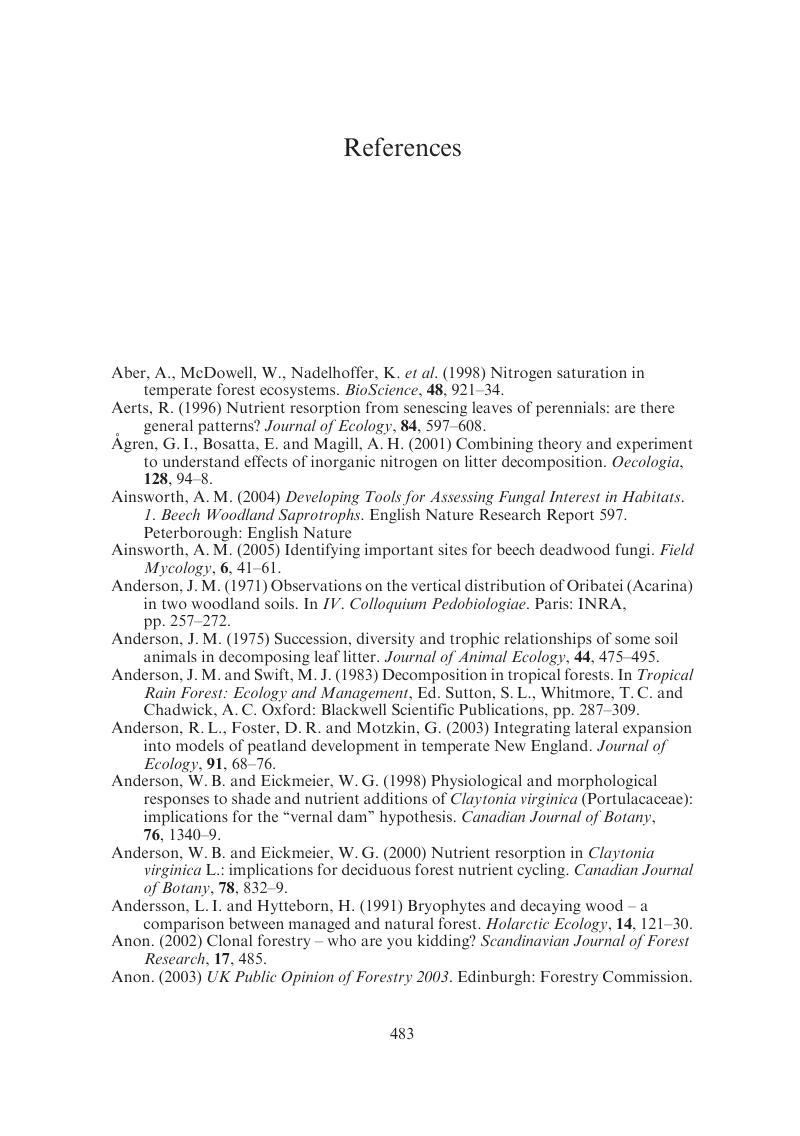Book contents
- Frontmatter
- Contents
- Preface
- Acknowledgements
- Metric equivalents
- 1 Introduction: Forest basics
- 2 Forest soils, climate and zonation
- 3 Primary production and forest development
- 4 Reproductive strategies of forest plants
- 5 Biotic interactions
- 6 Biodiversity in woodlands
- 7 Decomposition and renewal
- 8 Energy and nutrients
- 9 Forest change and disturbance
- 10 Working forests
- 11 The future – how will our forests change?
- References
- Index
- References
References
Published online by Cambridge University Press: 05 June 2012
- Frontmatter
- Contents
- Preface
- Acknowledgements
- Metric equivalents
- 1 Introduction: Forest basics
- 2 Forest soils, climate and zonation
- 3 Primary production and forest development
- 4 Reproductive strategies of forest plants
- 5 Biotic interactions
- 6 Biodiversity in woodlands
- 7 Decomposition and renewal
- 8 Energy and nutrients
- 9 Forest change and disturbance
- 10 Working forests
- 11 The future – how will our forests change?
- References
- Index
- References
Summary

- Type
- Chapter
- Information
- Ecology of Woodlands and ForestsDescription, Dynamics and Diversity, pp. 483 - 513Publisher: Cambridge University PressPrint publication year: 2007



